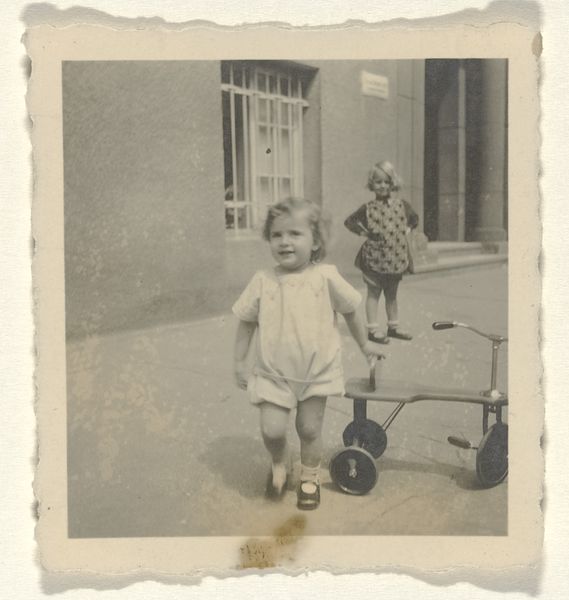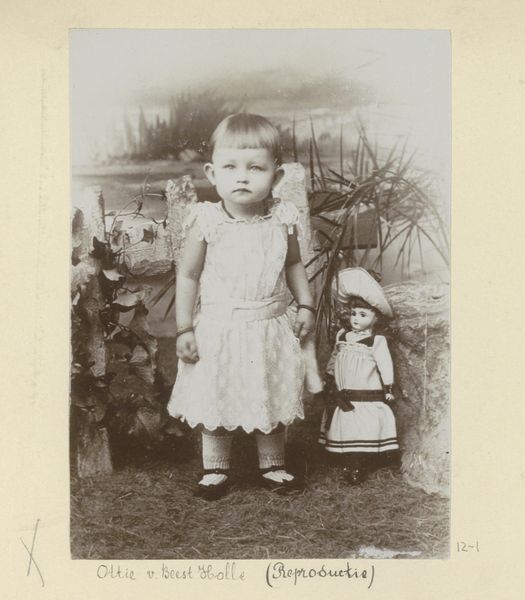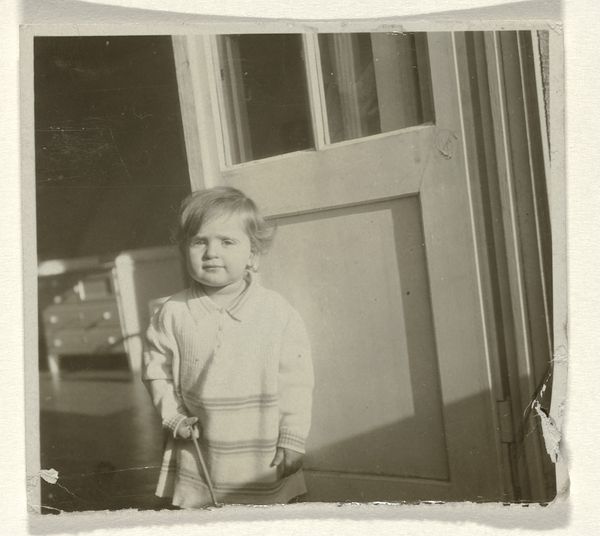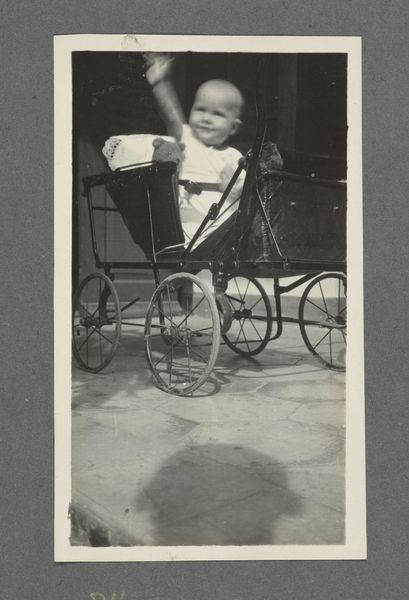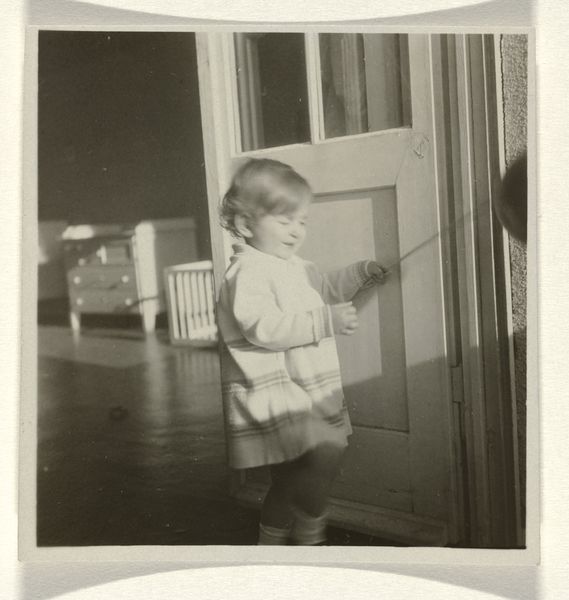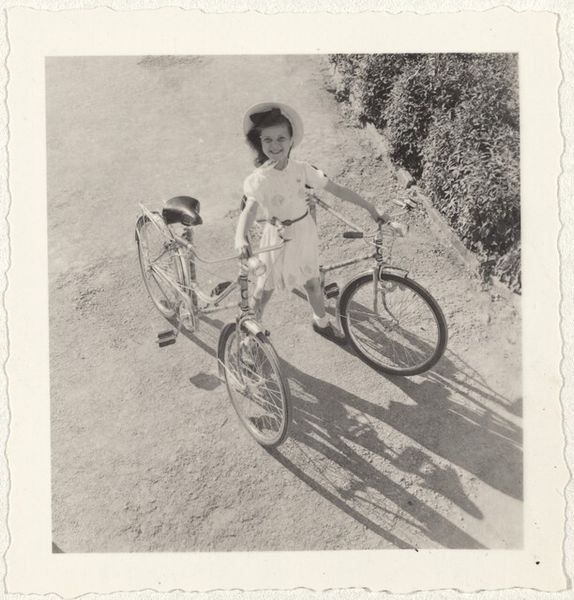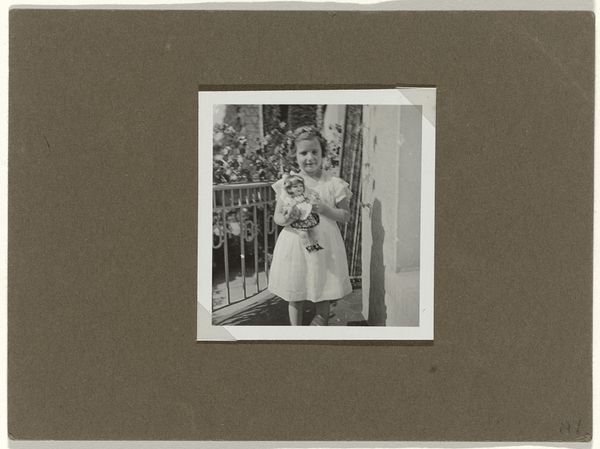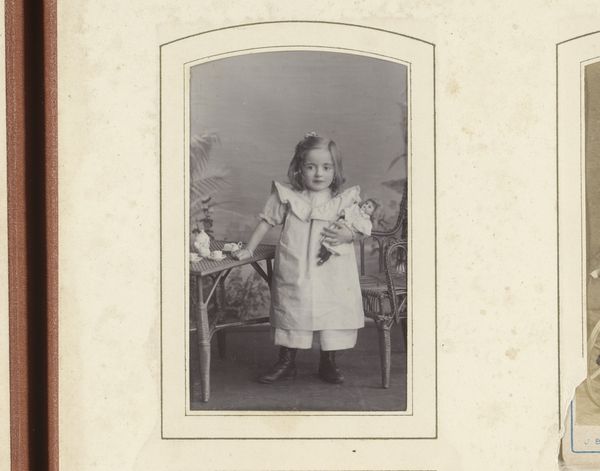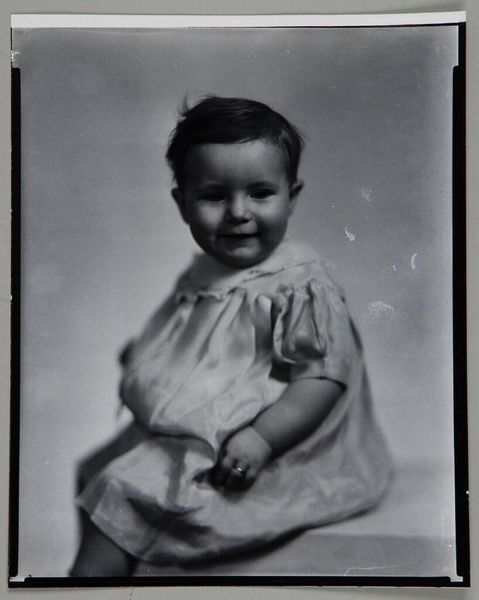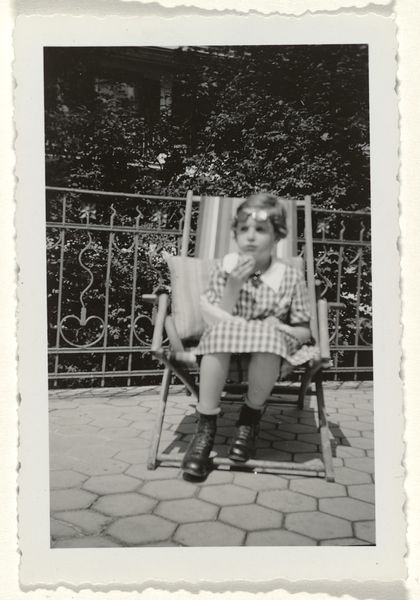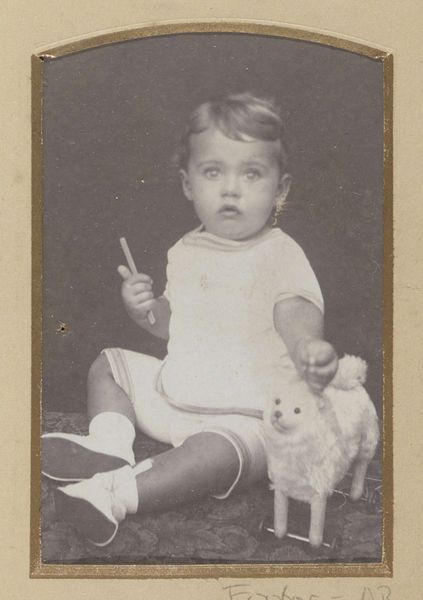
photography, gelatin-silver-print
#
portrait
#
landscape
#
photography
#
gelatin-silver-print
#
cityscape
#
modernism
Dimensions: height 65 mm, width 60 mm
Copyright: Rijks Museum: Open Domain
Curator: This charming image is titled "Isabel Wachenheimer op driewieler in München, mei 1929," which translates to Isabel Wachenheimer on a tricycle in Munich, May 1929. It's a gelatin silver print photograph from 1929. Editor: It strikes me as an incredibly simple and balanced composition, almost classical in its stark presentation. The young girl is positioned centrally, anchoring the shot, while the austere facade in the background adds depth, if a slightly unsettling one. Curator: The austerity you observe speaks to the period. There is this very strong sense of portraiture being linked with power structures; photography had begun being perceived as truth, where families of status showed off their family pride during a period of upheaval in Europe. Editor: Absolutely. The use of stark contrasts—the shadows cast by the tricycle wheels, the rigid geometry of the window bars—lends itself to that interpretation. The photographer uses these devices, giving the photograph a structured atmosphere which highlights both the youth and what one imagines were a conservative context for the photography being staged. Curator: Indeed. And looking closer, the bars on that window—it isn’t merely about light. The very visual language speaks to imposed boundaries, while the subject, a child on a tricycle, symbolizes freedom, joy, the limitless potential of childhood. The Wachenheimer family's narrative, interwoven with broader German-Jewish history of that time, reflects increasing challenges in their lives during the rise of the Nazi regime. The choice of location here adds a very subtle, ominous feel. Editor: I agree. One has to wonder about the conscious layering taking place. Formally, that background feels almost brutalist, emphasizing texture and stark lines. Curator: Photography in this period really was about recording not just images, but about positioning the subject, both in terms of class and what could well become one's legacy, even unconsciously. Isabel's family likely understood the power of this medium. Editor: And what might seem initially to be just a childhood snapshot really ends up functioning as something much deeper when decoded. It speaks volumes. Curator: I find myself wondering where Isabel's tricycle led her. Editor: And I will consider these shadows as structural devices of deep expression, given their strong diagonal tension with a window almost imprisoning her youth.
Comments
No comments
Be the first to comment and join the conversation on the ultimate creative platform.
